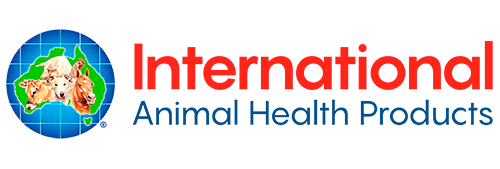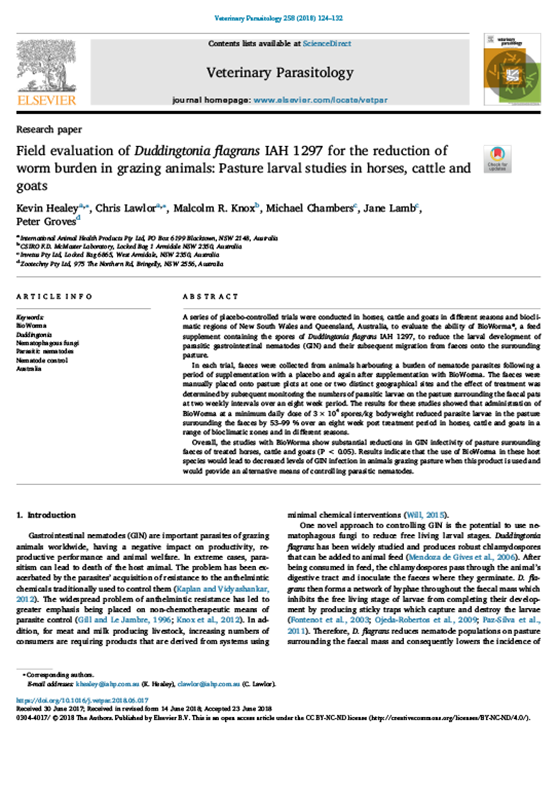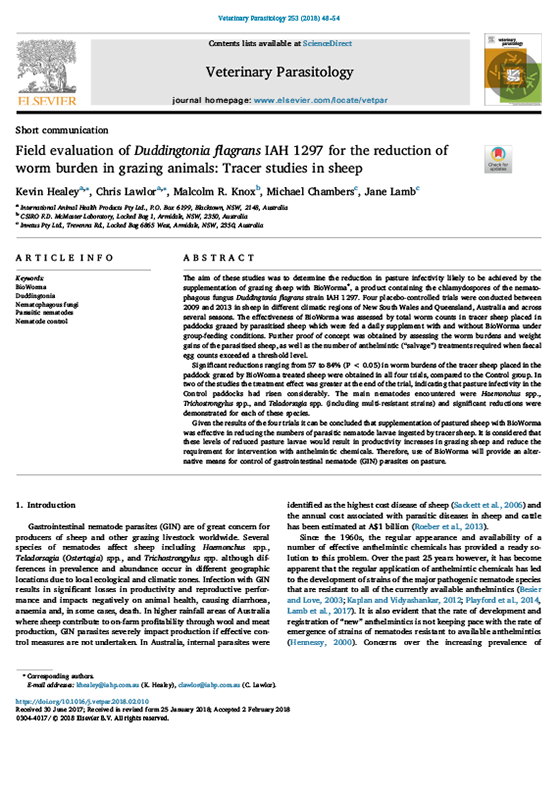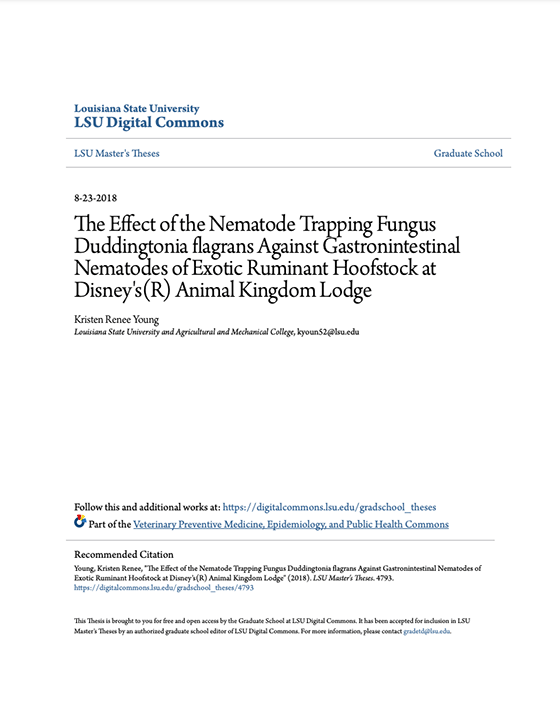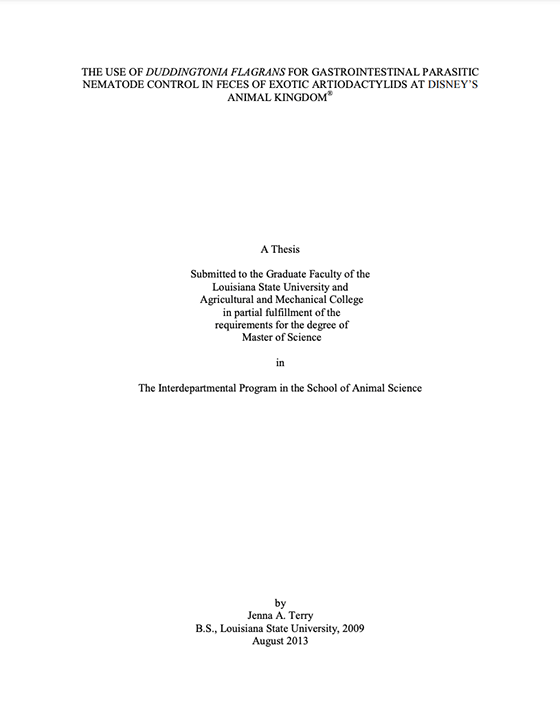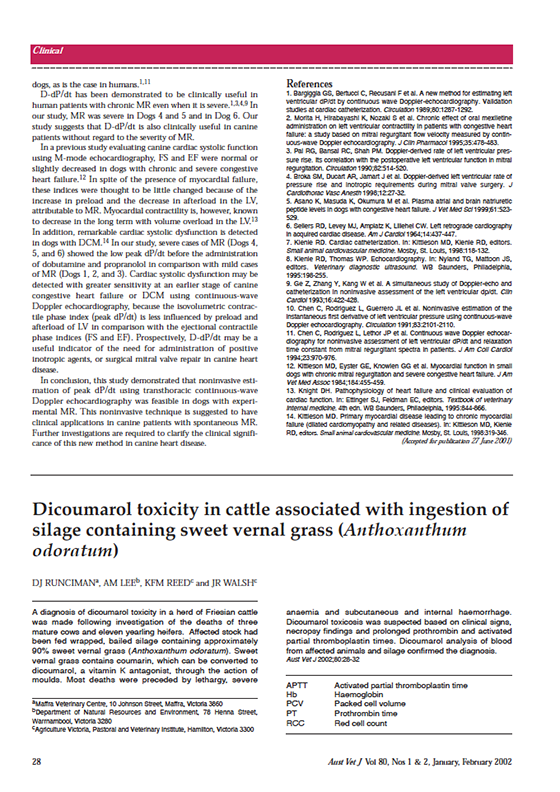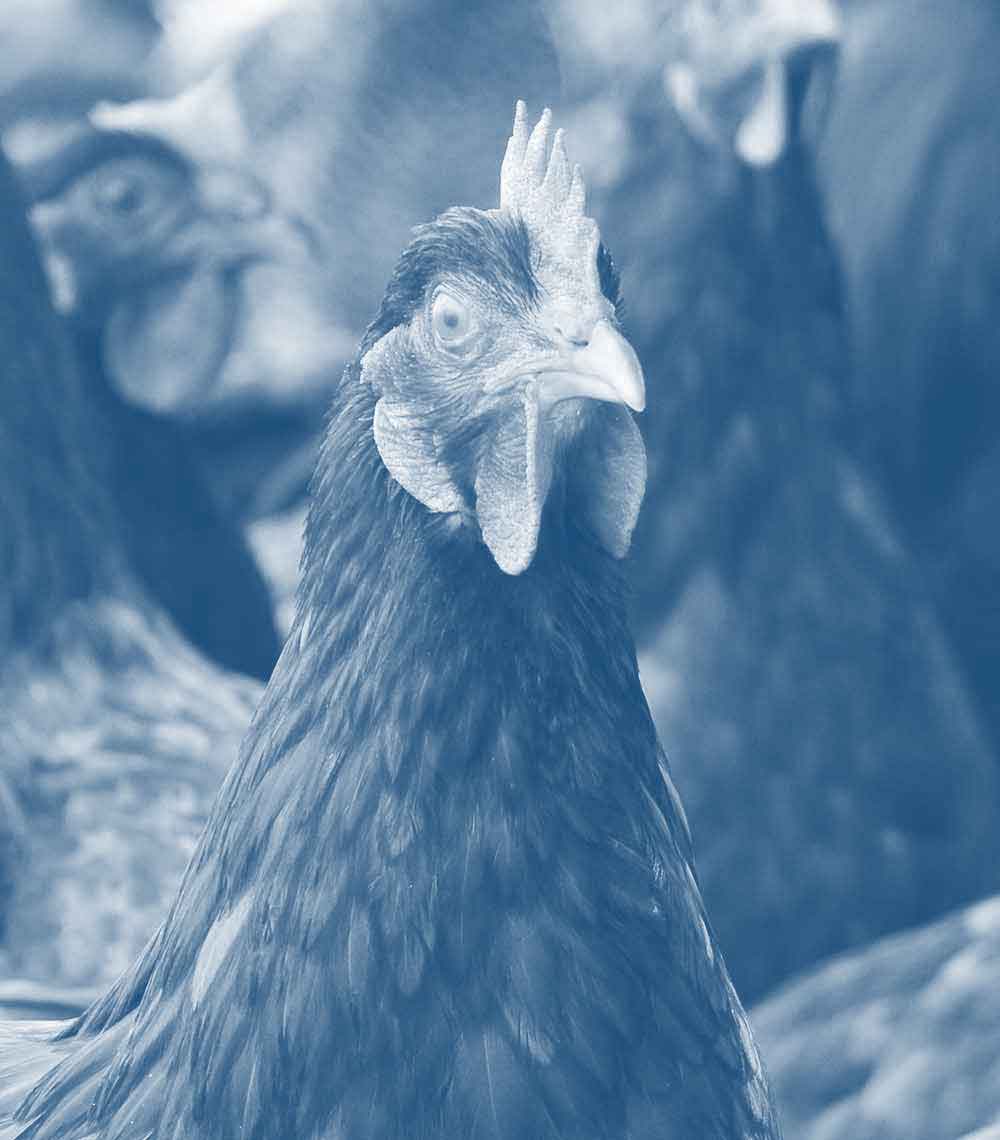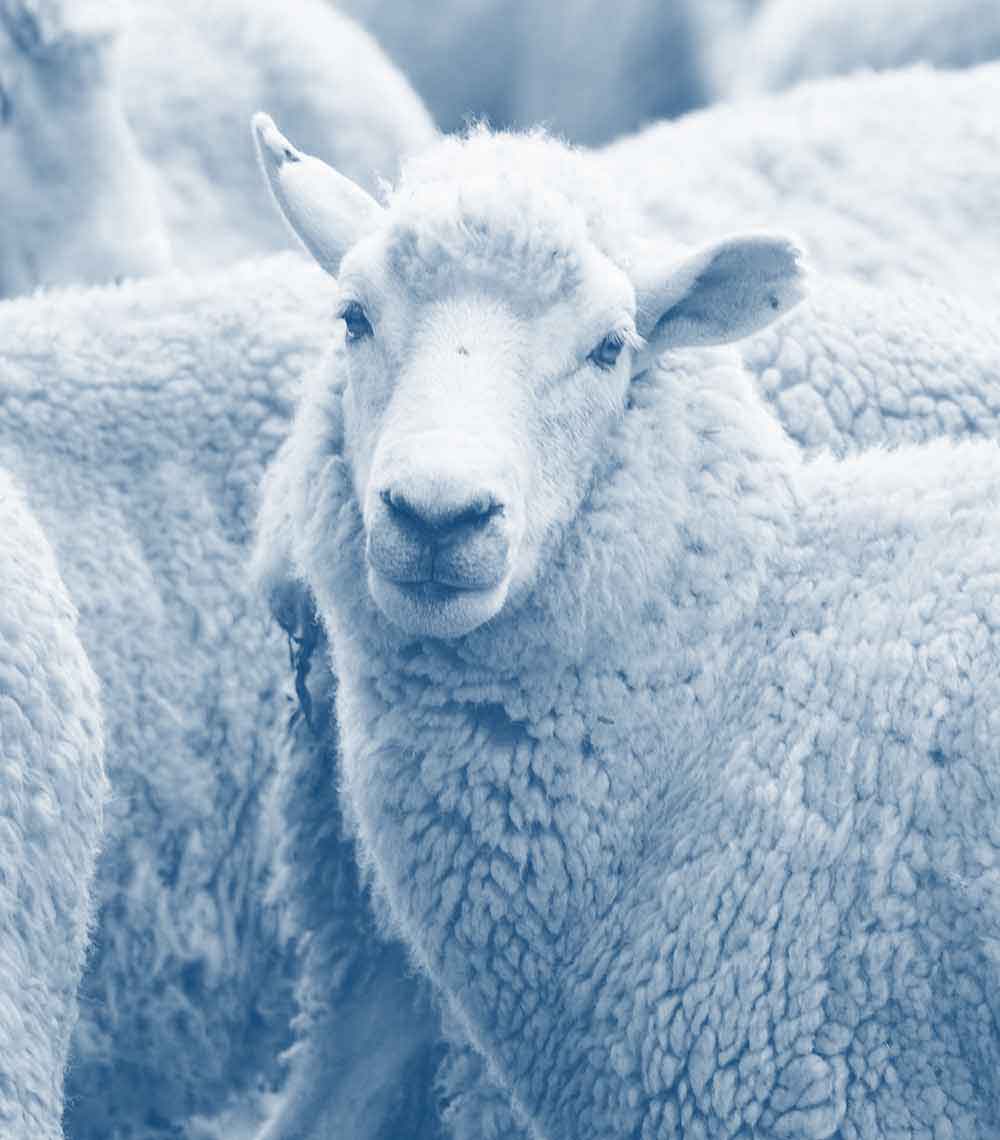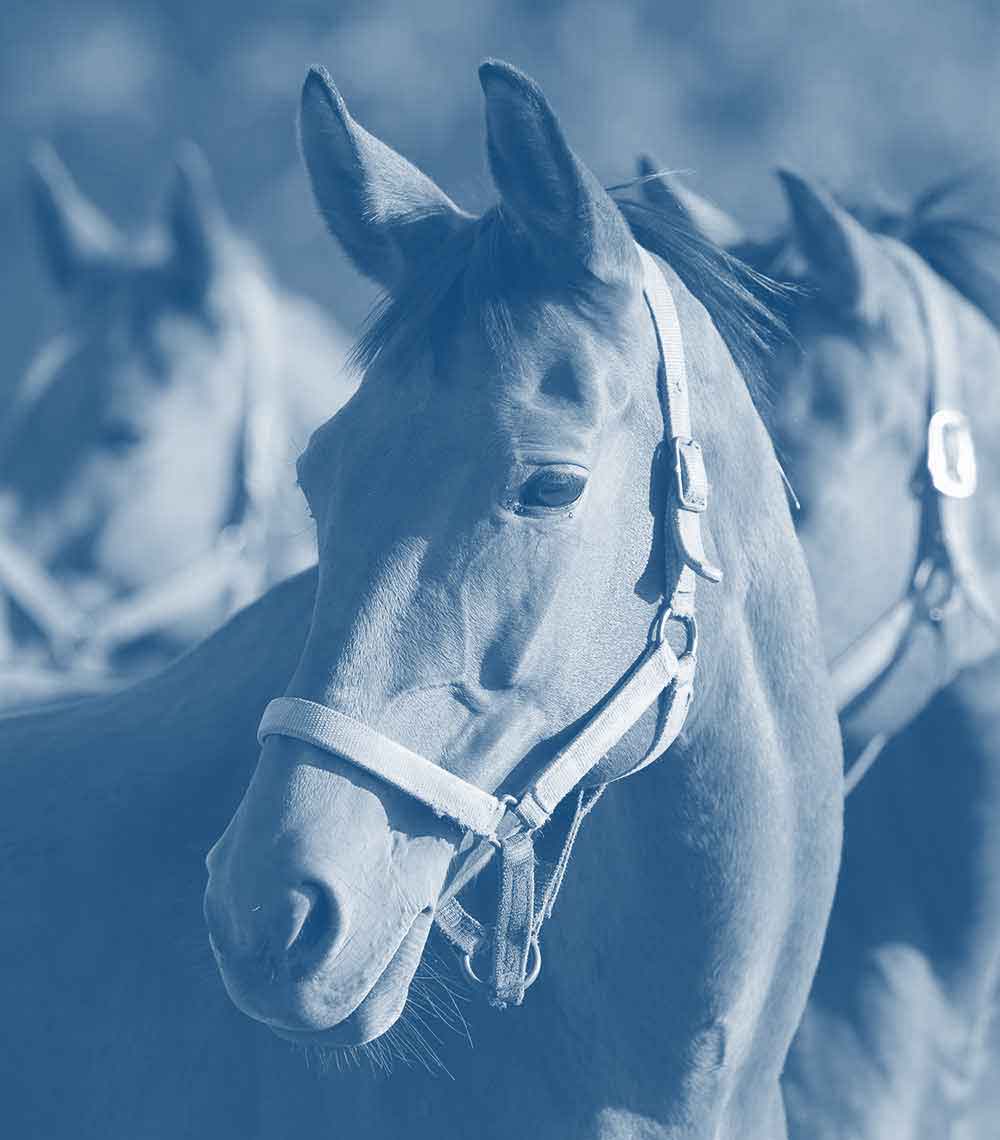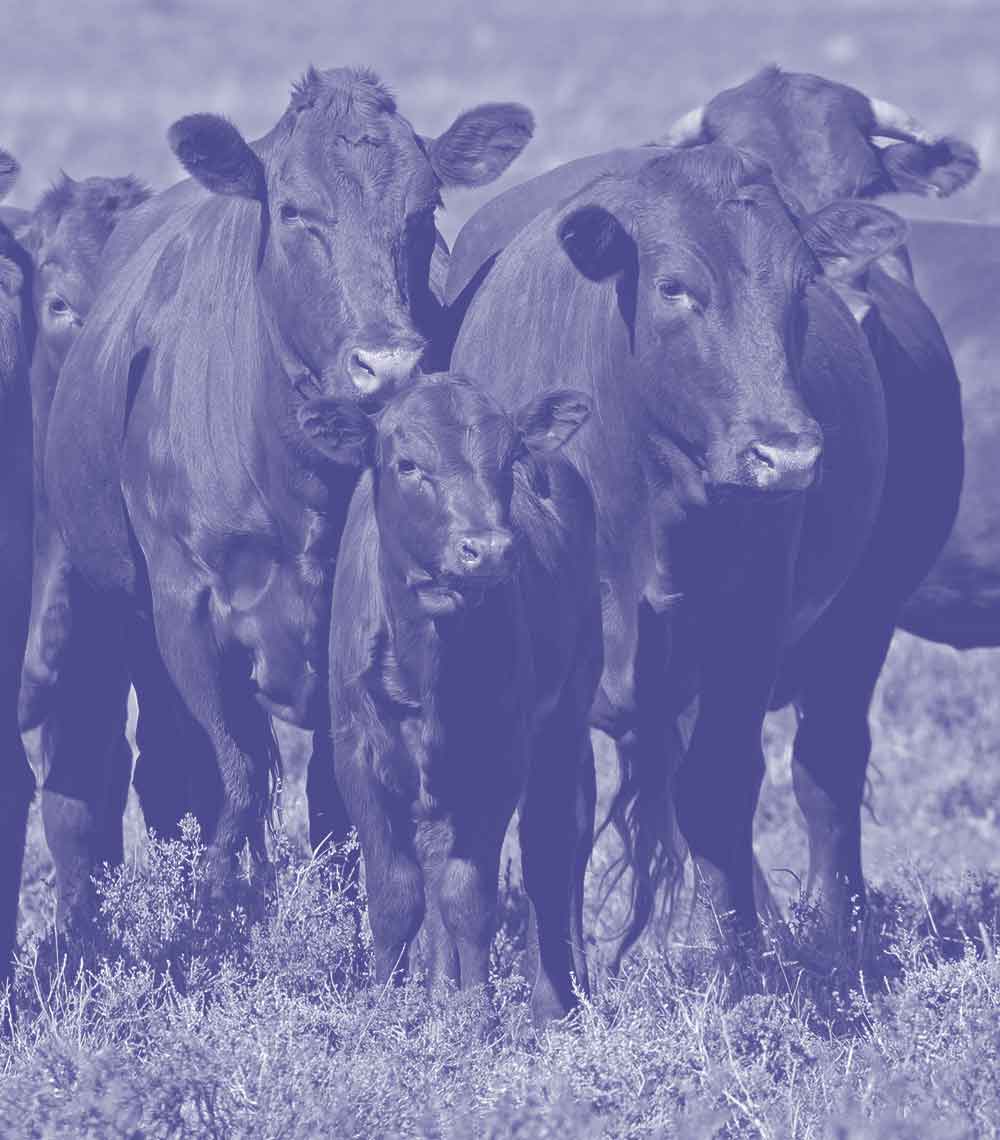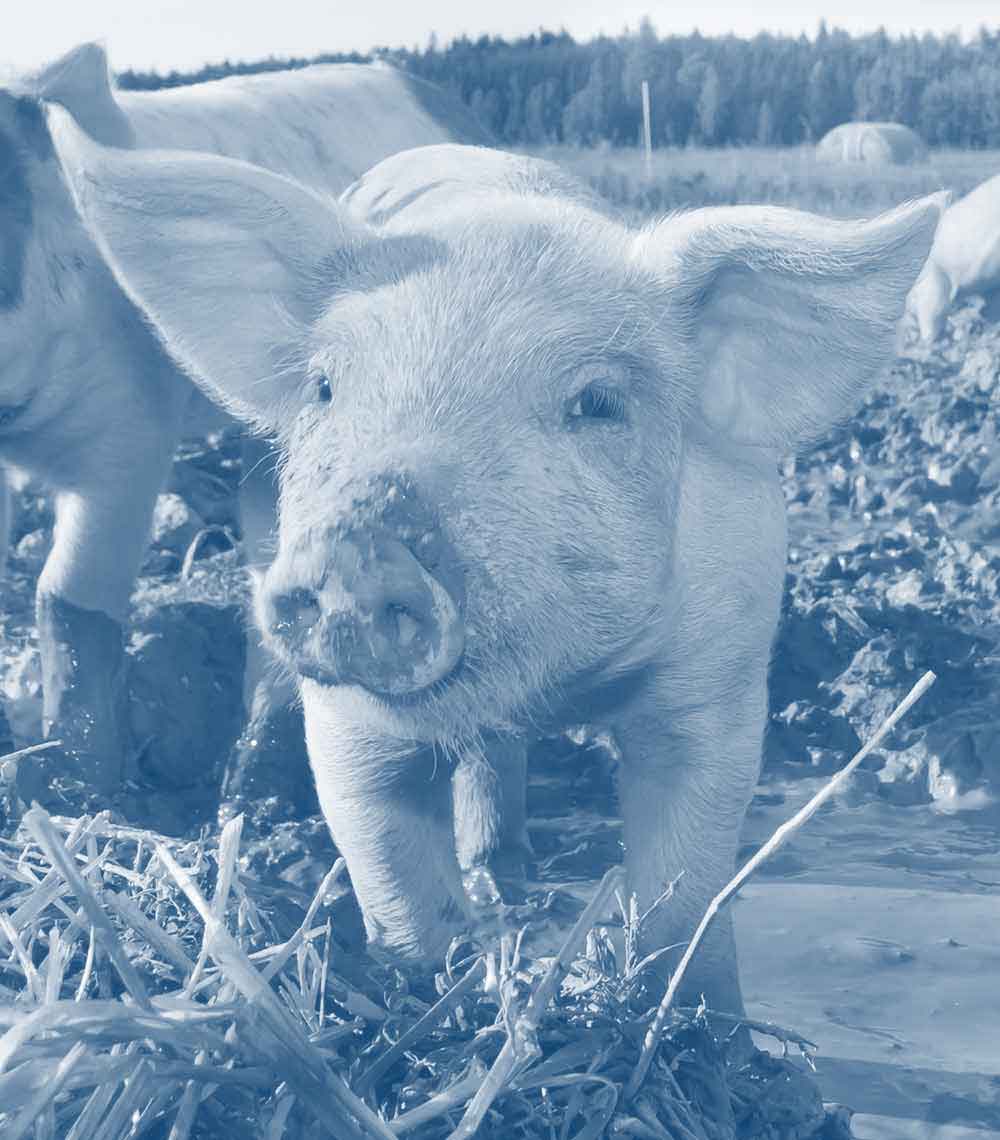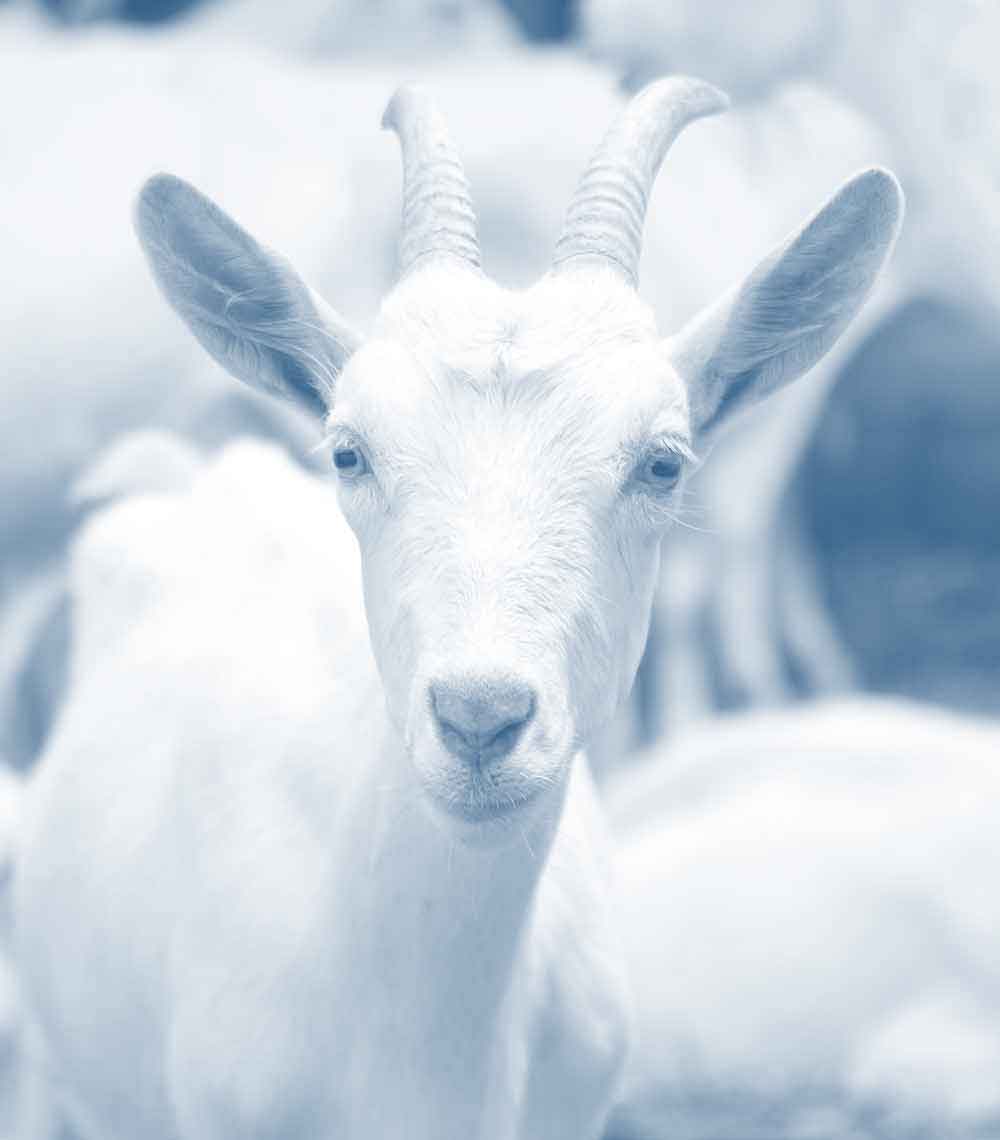Research
BioWorma research - horses, cattle and goats
Field evaluation of Duddingtonia flagrans IAH 1297 for the reduction of worm burden in grazing animals: Pasture larval studies in horses, cattle and goats
Overview
- Field studies were conducted in horses, cattle and goats using BioWorma®.
- The studies were conducted in Australia across a range of climatic zones / seasons.
- Significant reductions in larvae on pasture were obtained for each animal species.
- Main worm species were those of commercial importance to horses, cattle and goats.
- BioWorma® reduced pasture larval counts by an overall average of 84% in horses, 81% in cattle and 86% in goats.
BioWorma research - sheep
Field evaluation of Duddingtonia flagrans IAH 1297 for the reduction of worm burden in grazing animals: Tracer studies in sheep
Overview
- Four tracer studies were conducted in sheep using BioWorma®.
- The studies were conducted in Australia across a range of climatic zones/seasons.
- Main worm species were those of commercial importance to graziers.
- BioWorma® reduced pasture larval counts by an overall average of 68% in sheep.
BioWorma research - Exotic Ruminant Hoofstock at Disney's® Animal Kingdom Lodge
The Effect of the Nematode Trapping Fungus Duddingtonia flagrans Against Gastrointestinal Nematodes of Exotic Ruminant Hoofstock at Disney's® Animal Kingdom Lodge
Overview
- Treatment groups; Arusha Savannah (Reticulated giraffe, Roan antelope) and Uzima Savannah (Reticulated giraffe, Scimitar horned oryx)
- The treatment groups showed a gradual decrease in FEC over the duration of the study
- The results showed Duddingtonia flagrans effective against the free larval stages in the faeces
BioWorma research - Artiodactylids (Giraffe, Antelope & Gerenuk) at Disney's Animal Kingdom®
The use of Duddingtonia flagrans for gastrointestinal parasitic nematode control in feces of exotic artiodactylids at Disney's Animal Kingdom®
Overview
- Three independent studies were conducted using Duddingtonia flagrans in Artiodactylids (Giraffe, Antelope & Gerenuk)
- Greater than 80% reduction in L3 larvae that developed from gastrointestinal eggs in faeces
- Results from all 3 studies indicated that Duddingtonia flagrans was effective in reducing L3 in the faeces during the period of feeding
Koagulon - Cattle Study
Dicoumarol toxicity in cattle associated with ingestion of silage containing sweet vernal grass (Anthoxanthum odoratum)
Overview
- Dicoumarol toxicity in a herd of Friesian cattle was made following investigation of the deaths of three mature cows and eleven yearling heifers.
- Affected stock had been fed wrapped, bailed silage containing approximately 90% sweet vernal grass (Anthoxanthum odoratum)
- Sweet vernal grass contains coumarin, which can be converted to dicoumarol, a vitamin K antagonist
- Affected heifers were treated with vitamin K1 (Koagulon) given by subcutaneous injection once daily for 3 days. These heifers recovered.
